Abu Mena

Abu Mena is the archeological site of an early Christian pilgrimage center.
The monastic complex, which is still of significance to the Coptic community, developed around the tomb of the martyr Menas of Alexandria, who died in 296 CE. A large basilica church, an adjacent church that had probably housed the Saint's remains, a baptistery, a large dormitory for poor pilgrims, and Roman baths have been uncovered, but there are very few standing remains.
Community Perspective: there’s a New Church that attracts all the Coptic pilgrims nowadays, but the archeological site lies a few km away. Stanislaw has an overview of the practicalities. Its condition is very poor, expect to see “flooded crypts with sludge and trash inside”.
Amphitheater of El Jem
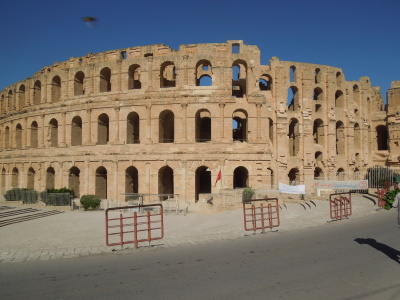
The Amphitheater of El Jem is an immense monument built for spectator events in the Ancient Roman town of Thysdrus.
The city of Thysdrus had become rich through the olive trade. The free-standing, elliptical amphitheater had room for 35,000 spectators, more than the number of its inhabitants. Its complex, high-quality architecture, combined with its location in a remote province, made it a showcase of Roman imperial power and prosperity.
Community Perspective: “An amazing coliseum, which is probably the finest anywhere - including the one in Rome.”
Ancient Thebes
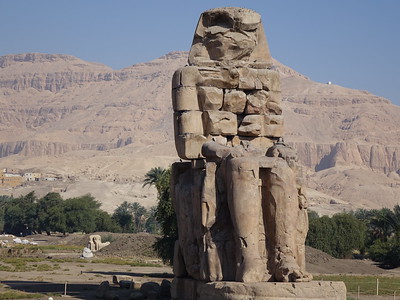
Ancient Thebes with its Necropolis is an archaeological site that testifies to Egyptian civilization from the Middle Kingdom to the beginning of the Christian era.
Thebes was its capital and a religious center centered around the god Amun. The remains include temples, tombs, royal palaces, villages of artisans and artists, inscriptions and sculptured figures. Most notable are the two colossal temples of Karnak and Luxor on the east bank of the Nile, and the Necropolis with the Valley of the Kings, the Valley of the Queens and the Temple of Hatshepsut on the west bank.
Community Perspective: now known as Luxor, this is considered “one of the world´s greatest archaeological sites” and “the Egyptian authorities could've even divided the site into several WHS”. Spending at least 2 days here is recommended. The Necropolis is the most cumbersome component to visit; Els, Zoë and GabLabCebu have shared some experiences on that.
Antigua Guatemala

Antigua Guatemala is a Spanish-colonial urban landscape filled with baroque architecture.
Antigua was the capital of the Spanish colonial government in Central America. The catholic church played an important role in daily life, which resulted in numerous churches, monasteries and examples of religious imagery. The 16th-century basic grid town plan has been preserved. The baroque building style was adapted to better withstand earthquakes.
Community Perspective: Unequalled among the colonial towns in Central America, beautifully preserved, and in its tourist approach geared towards a boutiquey international lifestyle. Els gives an overview of the main sights.
Auschwitz Birkenau
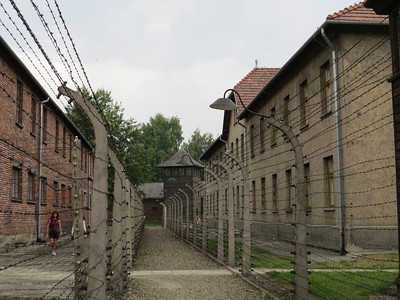
Auschwitz Birkenau - German Nazi Concentration and Extermination Camp (1940-1945) was the principal and largest of the concentration camps that were erected by Nazi Germany and today serves as a place of memory for the Holocaust.
Auschwitz I, the original concentration camp, was the administrative center for the whole complex, and the site of the deaths of mostly Poles and Soviet prisoners of war. Auschwitz II (Birkenau) was an extermination camp and the site of the deaths of over 1 million people. The highly authentic remains such as barbed wire, railway sidings, platforms, barracks, gas chambers and crematoria, in combination with the personal items left, are testimony to how the mass murder took place and to the lives of the victims.
Community Perspective: one of the most touching and horrific WHS. Make sure you visit both camps: the sheer size of Birkenau is overwhelming.
Białowieża Forest
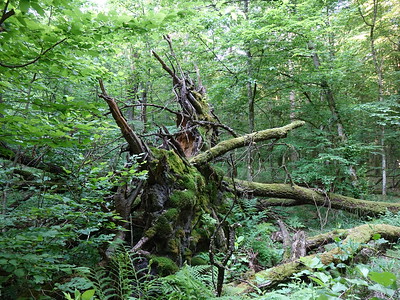
Białowieża Forest is an ancient woodland, the only remaining part of the immense forest which once spread across the European Plain.
Pine, beech, oak, alder and spruce are found in the (partly) old-growth forests, and the many dead trees make it important for the conservation of fungi. These little disturbed forests are home to viable populations of large mammals such as wolf and lynx, and the European Bison was reintroduced here in 1929 and now forms the species’ largest free-roaming population.
Community Perspective: the site straddles the Polish-Belarusian border and crossing it here was relatively easy before the current crisis in diplomatic relations. The Polish side is covered by Solivagant, who clarifies which elements are part of the core zone and which aren’t, by Nan who describes a visit to the museum area and the Bison Reserve, and by Els and Clyde who entered the Strict Reserve with a guide. Tips for the Belarusian side are provided by Jakob, who cycled there from Poland, and Tamas who ended up at a “dodgy Sovjet era museum, with grey and brown displays of the local flora and fauna, and a gloomy zoo”.
Boyana Church
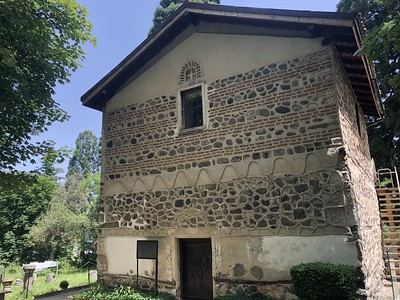
Boyana Church is a remarkable medieval monument with especially fine wall paintings.
The architecture of the original Boyana Church dates from the late 10th and early 11th centuries, while the current building also sees additions from the mid-13th century and mid-19th century. The paintings date from 1259. In all, there are 240 depictions on the walls. Its painter is still anonymous but stands for the team that decorated the church and that was trained in the studios of the Turnove Art School.
Community Perspective: the church is easily accessible as it lies on the outskirts of Sofia, though it takes a bit of a walk when using public transport. They only let in small groups at a time with a minder/guide, but a visit doesn’t take more than a few minutes.
Bryggen
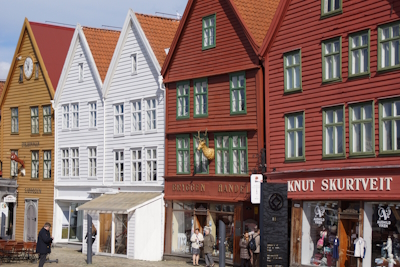
Bryggen comprises the remaining structures of a Hanseatic merchant quarter from 1350-1754.
The port city of Bergen was home to a kontor, one of four major trading posts of the Hanseatic League. From here they controlled the stockfish trade. This colony of bachelor German merchants lived and worked in a separate quarter with warehouses and small individual houses. Several fires have ravaged the wooden houses of Bryggen but its main structure and 62 buildings have been preserved.
Community Perspective: a very touristy place nowadays with colourful leaning wooden houses.
Carthage
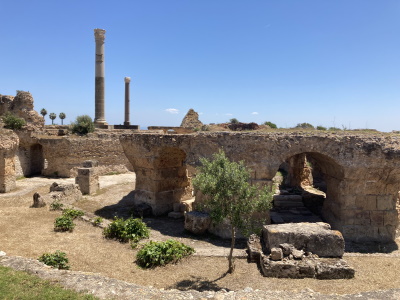
The Archaeological Site of Carthage comprises the remains of an influential commercial city and port from Antiquity, whose literary renown has continued.
Founded by Phoenician colonists around 814 BCE, the prosperous city became the cradle of Punic civilization and the major maritime power in the Mediterranean. After it destroyed the city in the Third Punic War in 146 BCE, Rome founded a colony at the same site. The city blossomed again and many monumental structures were built such as a large amphitheater. It became one of the most important cities of the Roman Empire and a center of early Christianity.
Community Perspective: The site can be “a bit disappointing because not much is left”. From the Punic period, the port area and the Tophet are worth visiting, as well as the Baths from Roman times. Be aware that the locations are all separate “islands”, spread across a large area, with their own access (fortunately you have to pay only once).
Chartres Cathedral
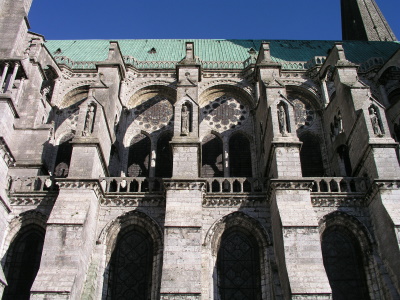
Chartres Cathedral is an influential example of Gothic art and architecture.
It stands out for the unity of its architecture and decoration (stained glass windows, statues, paintings). The Cathedral is in an exceptional state of preservation: the majority of the original stained glass windows survive intact, while the architecture has seen only minor changes since the early 13th century.
Community Perspective: The size is still impressive (it dominates the town and can be seen from far away), but reviewers have mixed feelings about the effect of the renovations and regret that the original 13th-century labyrinth is usually covered by chairs.
Damascus
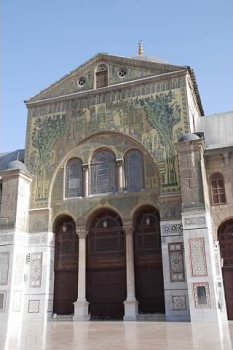
The Ancient City of Damascus is one of the oldest continuously inhabited cities and an important city in Islamic history and culture as the capital of the Umayyad caliphate.
Damascus has its origins in the third millennium BCE and contains a wealth of physical traces dating back from the Romans to the Ottomans. During the Umayyad period, it became an influential Arab city. Its masterpiece is the Grand Mosque of Damascus, one of the largest and oldest mosques in the world.
Community Perspective: “There is no city in the Middle East that can offer such a beautiful and authentic old town as Damascus.”, Bojana states. Squiffy gives a detailed overview of what can be found within the Roman walls of the Old City.
Dinosaur Provincial Park
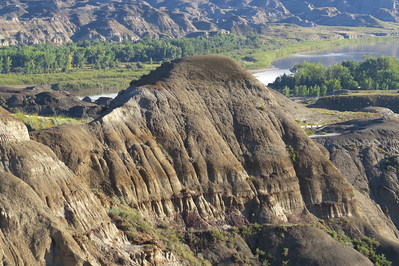
Dinosaur Provincial Park is renowned for its beautiful badlands and high number and quality of dinosaur fossils.
The conditions of this riparian landscape with sand and mud deposits were excellent for the preservation of dinosaurs' bones as fossils. Remains of over 40 dinosaur species have been found and more than 150 complete dinosaur skeletons, making it one of the richest dinosaur fossil locales in the world. The specimens represent every known group of Cretaceous dinosaurs.
Community Perspective: It’s a beautiful place because of the badlands, but be aware that only a small part of it is fully open to visitors and the reserved zone / the part where the dinosaur bones are, need a guided visit. Svein describes “walking between dinosaur fossil bones and teeth”, while Jay enjoyed the alternative activity of creating plaster casts of fossils at the visitor center.
Dubrovnik
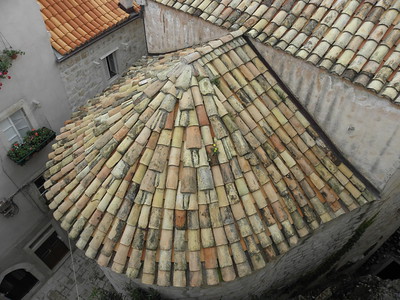
The Old City of Dubrovnik is a late-medieval walled city known for its Gothic, Renaissance and Baroque monuments.
It developed under the name of “Ragusa” in the 14th century as a maritime city-state. In its heydays, during the 15th and 16th centuries, it was a rival of Venice. A devastating earthquake in 1667 destroyed most of its public buildings and ended the city’s prosperity. Dubrovnik’s old city walls are fully intact.
Community Perspective: one of the most beautiful Mediterranean cities, best seen from the walk on its city walls. Few individual buildings stand out, although the Franciscan monastery is recommended for a visit.
Everglades

Everglades National Park is centered on a vast subtropical wetland with sawgrass marshes and mangrove islands.
The park holds the largest continuous stand of sawgrass prairie in North America and the largest mangrove ecosystem in the Western Hemisphere. It's the habitat of threatened species such as the Florida panther, snail kite, alligator, crocodile and manatee. It also is the most significant breeding ground for wading birds in North America.
Community Perspective: located just a few steps from Miami, this is a vast wilderness area. For short-term visitors, the Anhinga Trail is recommended for getting close to wildlife as does Shark Valley. But “To truly experience the Everglades one must be willing to be somewhat adventuresome. A trip down the coastline in a kayak or a canoe trip into the interior is a camping experience of a lifetime.” Klaus provides tips on how to visit the park without a car, and Ian describes a day trip from the Orlando area.
Fasil Ghebbi
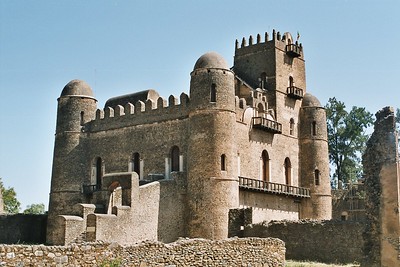
Fasil Ghebbi, Gondar Region, covers the remains of a fortress-city that represents Ethiopian civilization on the highlands and influenced Ethiopian architecture.
Fasil Ghebbi was the residence of the Ethiopian emperor Fasilides and his successors in the 17th century. The walled compound functioned as the centre of the Ethiopian government until 1864. Its architecture was inspired by the Baroque style that was introduced by Jesuit missionaries. The site comprises the buildings within the fortress and also seven further Ethiopian-Orthodox monasteries and palaces in and around the city of Gondar.
Community Perspective: It’s an amazing place to discover, with its Medieval European/Moghul-like buildings. Wojciech recommends visiting the Gemja Ber Marjam (or Debre Birhan Selassje) church for its paintings.
Forts and Castles Gold Coast
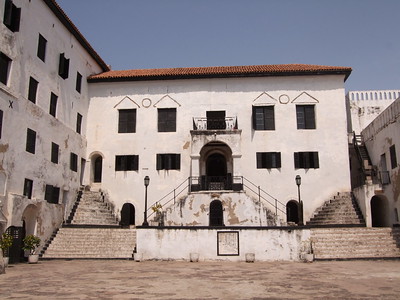
"Forts and Castles, Volta, Greater Accra, Central and Western Regions" comprises the remains of trading posts along the Gold Coast from the colonial period, which shaped the world’s history for centuries.
These Western-style fortifications and outposts (mostly Portuguese, Dutch and British) were constructed to support the trade in gold and later slaves. The most notable is Elmina Castle, one of the oldest European buildings outside Europe, built in 1482.
Community Perspective: Elmina Castle and Cape Coast Castle are the most visited components and are in good condition. Chris managed to take in 11 castles on a road trip, and Richard dwells upon the fate of the slaves held captive here.
Glacier parks
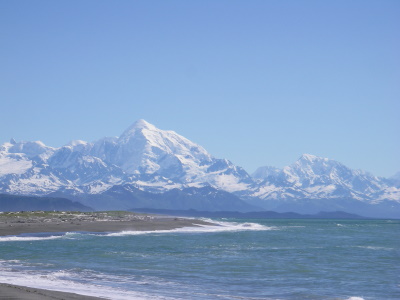
Kluane / Wrangell-St. Elias / Glacier Bay / Tatshenshini-Alsek comprises a mountain landscape shaped by geologic and glacial processes.
These four parks in the Yukon and Alaska offer combined marine, coastal, wild river and high mountain scenery with minimal extent of human modification. They hold over 200 glaciers, including some of the world’s largest and longest. Wildlife is abundant too, with a healthy population of grizzly bears.
Community Perspective: Glacier Bay is regularly visited by large cruise ships and good views are had from there. Tsunami describes an unforgettable journey on smaller boats and small airplanes, while J_neveryes explored Kluane by doing rewarding day hikes from Haines Junction.
Grand Canyon
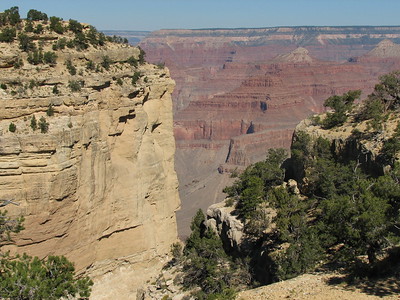
Grand Canyon National Park is centered on a vast and colourful, steep-sided gorge of exceptional natural beauty.
The Grand Canyon was carved by geological activity and the Colorado River, which exposed 2 billion years of the Earth’s history. Precambrian and Paleozoic layers are well-visible and include a rich collection of fossils. The different elevations result in diverse ecosystems with a variety of flora and fauna species.
Community Perspective: lives up to its hype, “Awesome in the proper sense of the word”. It’s best to stay overnight in the park so you can beat both the sun and the crowds. Kyle has described the various access points: South Rim, North Rim, and "Grand Canyon West". Jakob walked halfway down from both Rims.
Historic Cairo
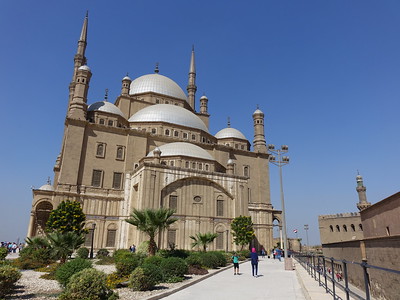
Historic Cairo encompasses the historic centre on the eastern bank of the Nile, which includes over 600 classified monuments dating from the 7th to 20th centuries.
Cairo was the dominant political, cultural and religious center of the Islamic world from the 7th to the 14th century. Its monuments include necropolises, the Citadel, bazaars, mosques, and palaces, some considered masterpieces of Islamic architecture such as the mosque Ibn-Tulm and the mosque of Qait Bey. The historic centre also comprises Coptic Cairo and its many old churches, and the ruins of Roman fortifications.
Community Perspective: it doesn’t attract as many tourists as Egypt’s classic sites, and it feeling “incredibly crowded, dirty, smoggy” doesn’t help. You can spend one day in the Islamic section and one day in the Coptic one, as described by Jay, Frederik (who visited during Ramadan), Els (who details the Islamic monuments) and GabLabCebu.
Independence Hall
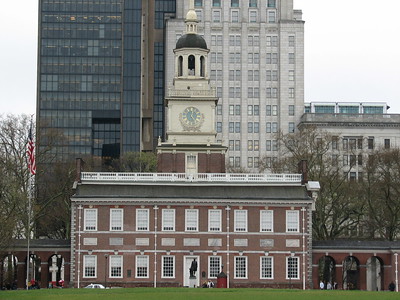
Independence Hall is an 18th-century government building where both the United States Declaration of Independence and the United States Constitution were signed, which had a profound influence around the world.
The red brick building was designed in the Georgian style to originally house the colonial government of Pennsylvania. From 1775 to 1783, it was the principal meeting place of the representatives from each of the thirteen British North American colonies. The United States Declaration of Independence was approved there on July 4, 1776, and the Declaration was read aloud to the public in the area now known as Independence Square. The bell tower steeple of Independence Hall was the original home of the "Liberty Bell".
Community Perspective: the site has gathered no less than 17 reviews so far, expressing wide-ranging opinions, but most seem to agree that (as eloquently summarized by Jay) “the ideas forged within its walls far outsize the building”.
Kathmandu Valley
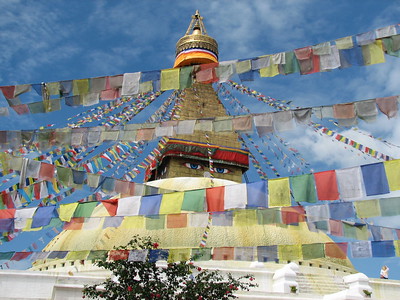
The Kathmandu Valley comprises seven groups of urban monuments that showcase the Newari culture and the coexistence of Hinduism, Buddhism and animist rituals.
Its palace complexes, temples and stupas, dating from the 16th-18th century, have been built in the typical architecture using brick, stone, timber and bronze. They include Kathmandu Durbar Square, Patan Durbar Square, Bhaktapur Durbar Square, Changu Narayan, Syambhunath Stupa, Pashupatinath and Bouddhanath Stupa.
Community Perspective: Some call it “the worst example of uncontrolled urban sprawl and air pollution that I have ever seen”, while others praise the active religious use of Pashupatinath and Bouddhanath, the daily life and frequent festivals. The site is best explored on a slow pace and a visit will take multiple days.
Kotor

The Natural and Culturo-Historical Region of Kotor encompasses the cultural heritage around the Bay of Kotor.
The Bay has been inhabited since Antiquity and has some well-preserved medieval towns such as Kotor, Risan, and Perast. In the late 14th century, Kotor was seized by the Venetian Republic, and its 4.5km long city walls received their current structure. It represents one of the most important examples of defensive Venetian military architecture.
Community Perspective: Kotor's assets are its natural setting and its impressive city walls, but you'll need to share those with cruise ship loads of tourists. The nearby town of Perast offers more of the same but in a more laidback atmosphere, while Risan has some Roman mosaics. Tsunami has a story to share about his hike to the “Top of the Old Kotor Trail".
Madara Rider
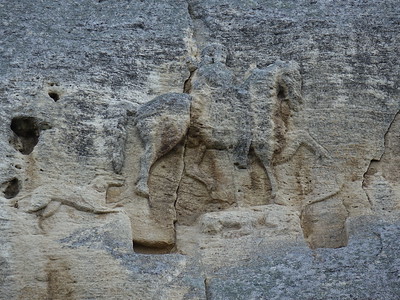
The Madara Rider is a large rock relief that is a highlight of pagan Bulgarian art.
The relief depicts a scene revolving around a majestic horseman 23m above ground level in an almost vertical 100-metre-high cliff. The scene is surrounded by inscriptions that are a chronicle of events. The 8th-century monument is usually attributed to the Khans of the First Bulgarian Empire.
Community Perspective: The relief is chiseled high up the cliff wall – with the naked eye you can see the Rider but not the inscriptions. The core zone is very limited and you will be done with it in 15 minutes, but the surrounding area is worth exploring (see Tsunami’s review).
Medina of Tunis
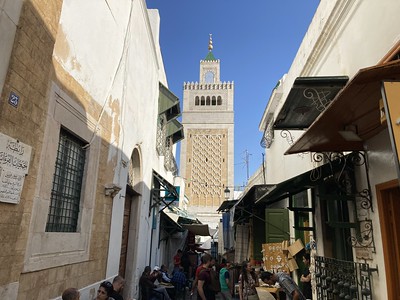
The medina of Tunis contains the historic center of an Arab-Islamic city that has its origins in the Middle Ages.
At the time, Tunis was the main city of Ifriqiya, the North African Mediterranean coastal region that traded with Southern Europe and the Orient. The original street plan of the medina, which dates back to the 8th century, has been well preserved. It contains some 700 monuments, including the Great Mosque, the Aghlabid Ez-Zitouna Mosque (built in 723), and the Bey's Palace.
Community Perspective: perhaps the best Medina in the country (some say even in the whole Arab world) for the atmosphere of the labyrinthine streets. It does lack great architectural highlights though.
Meidan Emam, Esfahan
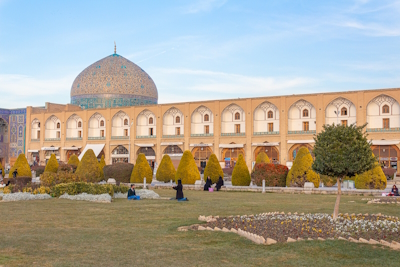
Meidan Emam, Esfahan is one of the largest city squares in the world.
It was used in Persian socio-cultural life (for parades, celebrations and public executions) during the Safavid era. The square is surrounded by a homogenous ensemble of important historical buildings that were built over a short time span, such as the Shah Mosque, Ali Qapu Palace, Sheikh Lotf Allah Mosque and the Isfahan Grand Bazaar.
Community Perspective: “The darling of the Iranian tourism industry”. The best views of the square overall are to be had from the balcony of the Ali Qapu Palace, while the Emam or Shah Mosque is the square’s most striking component and the Sheik Lotfallah Mosque has a beautiful interior.
Mont-Saint-Michel
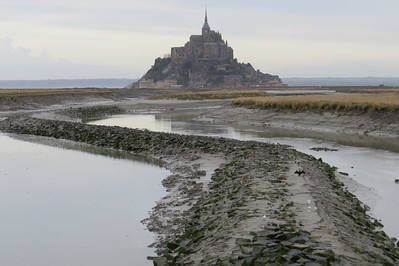
Mont-Saint-Michel and its Bay is characterized by the rocky tidal island that holds an 11th-century Benedictine abbey and a fortified medieval village.
The abbey, dedicated to the Archangel Michel, was an important place of pilgrimage in medieval Christianity and was deliberately placed in a difficult place of access. The Gothic builders made the best of the natural setting, overcoming the problems that come with it, and created a sharp silhouette against the sky.
Community Perspective: It’s worth watching the island from a distance or walking a loop around it if the tides allow – the first sight of this ‘pyramid’ has a real wow effect and it “must have been even more awe-inspiring for the people in the Middle Ages”. The roads leading up to the Abbey nowadays “are cluttered with overpriced restaurants and purveyors of tourist tat”, though things seem to improve if you stay overnight and the crowds are gone. By public transport, the site can be reached by taking a bus from Rennes long-distance bus station.
Ngorongoro
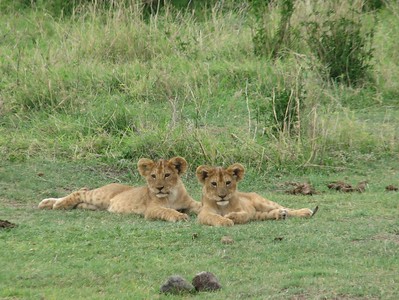
The Ngorongoro Conservation Area is centered around the Ngorongoro Crater and the hominid fossils found in the Olduvai Gorge.
The crater floor is the world's largest unbroken, unflooded volcanic caldera. Its grassy plains with both fresh and brackish water lakes provide a natural enclosure for a very wide variety of wildlife. Ngorongoro is also part of the annual Serengeti migration route of wildebeest and other ungulates. With Laetoli, where fossilized footprints have been found, and remains of a number of diverse hominin species within the Olduvai Gorge, the site also has contributed to the study of human evolution.
Community Perspective: This covers a large area that extends well beyond the crater into the Lake Ndutu area and Olduvai Gorge; their features are well-described by Squiffy.
Nubian Monuments
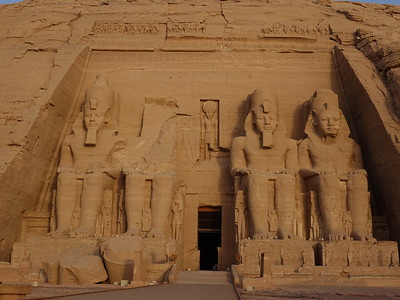
The Nubian Monuments from Abu Simbel to Philae cover a string of ancient archaeological sites in southern Egypt.
Extending from Aswan to the Sudanese border, they were built by various pharaohs from the 2nd millennium BCE onwards in their attempt to gain or retain dominance over the Nubian kingdom and its natural assets such as gold, copper and ivory. The monuments date from the New Kingdom to the Ptolemaic, Roman and early Christian periods. After an international safeguarding campaign, two of its masterpieces (the temples of Abu Simbel and the sanctuary at Philae) were moved in their entirety to a nearby location due to the creation of the Aswan High Dam and Lake Nasser.
Community Perspective: Abu Simbel is the crowd magnet, but Philae comes especially recommended for its delightful setting and detailed hieroglyphs and carvings. Els describes an overnight visit to Abu Simbel, while Nan gives practical info on getting around Aswan and Philae.
Ohrid Region

The Natural and cultural heritage of the Ohrid Region comprises the ancient town of Ohrid and nearby Lake Ohrid, one of the deepest and oldest lakes in Europe.
Ohrid has been a cultural centre of great importance for the Balkan and the Slavonic language. Its Byzantine churches are renowned for their frescoes and icons. The lake, which is low in nutrients, holds many endemic species of fish, molluscs etc. The lakeshore reed beds and wetlands provide critical habitat for hundreds of thousands of wintering water birds.
Community Perspective: the site encompasses a large area and warrants multiple days to experience both its cultural and natural aspects. Visit outside of the summer months to avoid the tourist crowds. Clyde’s recent review focuses on the lesser-visited Albanian side.
Persepolis
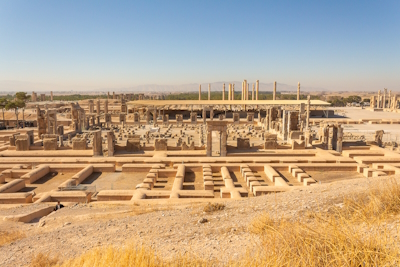
Persepolis was the ancient ceremonial capital of the second Iranian dynasty, the Achaemenid Empire.
The earliest remains of Persepolis date from around 518 BCE. It was Darius the Great who built the monumental terrace, stairways, and the great palaces in this royal city. They are decorated with sculpted friezes and columns.
Community Perspective: The site is particularly famous for its bas reliefs, which are in superb condition and 'in situ'. "If I could give it 6 stars I would do it", one of the reviewers stated.
Plitvice Lakes
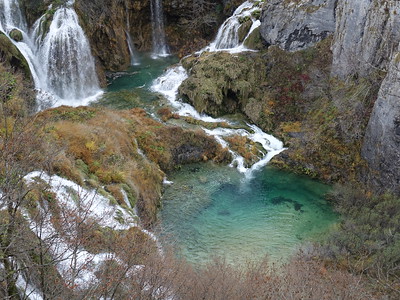
Plitvice Lakes National Park comprises 16 lakes that are known for their scenic beauty and distinctive colours, ranging from azure to green, grey or blue.
The Plitvice Lakes lie in a basin of karstic rock, mainly dolomite and limestone, which has given rise to their most distinctive feature. The lakes are separated by natural dams of tufa, which is deposited by the action of moss, algae and bacteria. The colours change constantly depending on the number of minerals or organisms in the water and the angle of sunlight.
Community Perspective: expect to spend a full day here; a network of hiking trails connects the lakes. Spring and Autumn are good seasons to visit, as it will be less hot and less crowded.
Pyramids (Memphis)
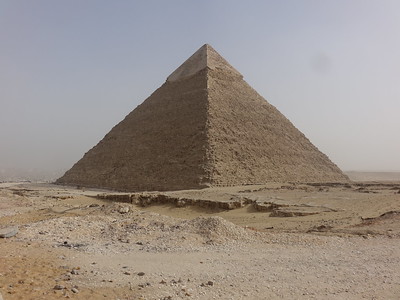
Memphis and its Necropolis - the Pyramid Fields from Giza to Dahshur hold the first complex monumental stone buildings in Egypt and show the development of tombs to pyramidal shape.
These archeological sites date from the Old Kingdom to the Ptolemaic period, when Memphis was the administrative capital and was associated with the belief in the god Ptah. Its masterpieces include the Great Pyramid of Giza, the only surviving wonder of the ancient world, and the Pyramid Complex of Saqqara with the step pyramid of Djoser, the oldest pyramid to be constructed.
Community Perspective: Solivagant describes a visit from 1975, when he was still able to climb the Pyramid of Giza in full sight (Jaz did so much more clandestinely in 2000). Clyde and GabLabCebu went inside, while Els provided some public transport tips for Giza.
Rock Drawings in Valcamonica
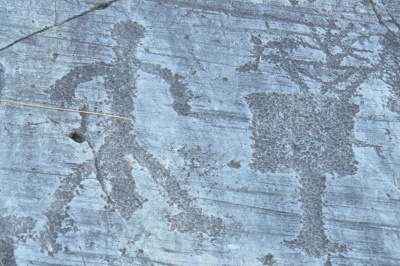
The Rock Drawings in Valcamonica comprise one of the world’s largest collections of prehistoric petroglyphs.
Approximately 140,000 petroglyphs were discovered in this Alpine Valley. They were created over a period of around 8,000 years, starting around 8,000 BCE by nomadic hunters. Cosmological, figurative, and cartographic motifs are featured, in some locations forming monumental hunting and ritual scenes.
Community Perspective: The petroglyphs here can be difficult to make out depending on the light. They lie spread across 6 different locations, of which Naquane in Capo di Ponte seems to be the main one; it can be visited on your own via signposted footpaths along the rocks.
Rock-hewn Churches of Ivanovo
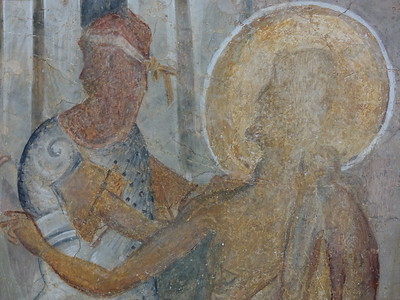
The Rock-Hewn Churches of Ivanovo comprise a group of monolithic religious buildings that are noted for their beautiful and well-preserved medieval frescoes.
The caves in the region were inhabited by monks who hewed cells, churches and chapels out of solid rock. Their 13th- and 14th-century frescoes, preserved in 5 of the churches, are considered wonderful examples of Bulgarian medieval art. Many century-old inscriptions have also been preserved in the monastical premises.
Community Perspective: Only one of the caves (Holy Virgin's Rock Church, part of Archangel Michael's cloister) is open to tourists. And it is tiny – Els has described what you may expect from a visit.
Sagarmatha National Park
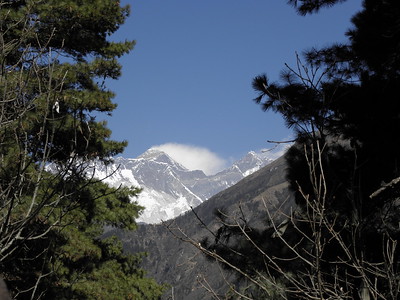
Sagarmatha National Park covers a dramatic mountain landscape that holds the highest peak in the world, Mount Everest at 8,848 m.
Geologically, it is a young area covered with high peaks, deep valleys and glaciers. The park holds flora and fauna specific to this altitude, including the snow leopard and red panda. The Dudh Kosi River originates here, while Gokyo Valley (a RAMSAR site) has a number of lakes.
Community Perspective: No one here has described a visit to the summit yet, but Solivagant got closest after reaching Everest Base Camp on foot in 1976. Els did a multi-day hike in the park from Lukla with good views of Everest, Ama Dablam, Lhotse and other 7000-ers, while Clyde went on a 1hr Mt. Everest sightseeing flight.
Split
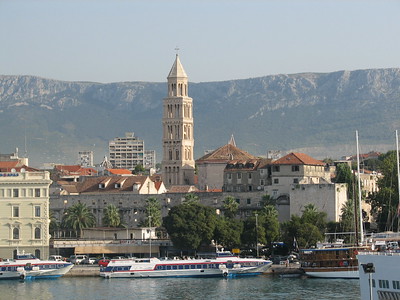
The Historic Complex of Split with the Palace of Diocletian is both an archeological and an urbanistic monument that has been in use since Roman times.
At the end of the third century CE, the Roman Emperor Diocletian built his palace here. After the fall of the Roman Empire, his palace was divided into small houses for the local population. Diocletian's mausoleum was turned into a cathedral. Romanesque churches from the 12th and 13th centuries, medieval fortifications, Gothic palaces of the 15th century, and other palaces in Renaissance and Baroque style make up the rest of the protected area.
Community Perspective: the city has a very original layout and it can be difficult to find your way. Highlights include the Golden Gate, Narodni Trg (People's Square), the heart of the Venetian city, and the Podrumi, the cellars of the Palace.
Stari Ras and Sopocani
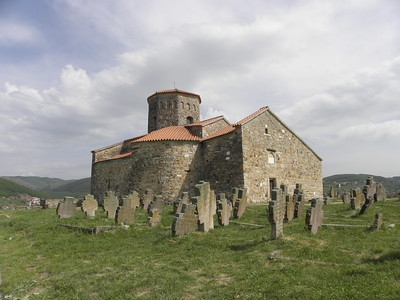
Stari Ras and Sopoćani are medieval Serbian monuments that are exemplary for the Raška School of art and architecture.
Stari Ras was one of the first capitals of the medieval Serbian state of Raška. The frescoes of nearby Sopoćani Monastery are considered by experts on Serbian medieval art as the most beautiful of the Byzantine period. Decorative frescoes also adorn the Djurdjevi Stupovi Monastery and St Peter’s Church.
Community Perspective: the 4 components are scattered around the countryside near Novi Pazar. To see the ruins of Stari Ras requires a steep uphill walk, starting from Hotel RAS Pazatiste. It is considered the weakest among the locations, and St. Peter’s the prettiest.
Tchogha Zanbil
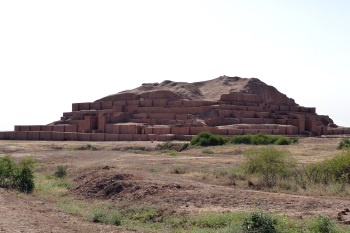
Tchogha Zanbil comprises the ruins of the holy city of the Kingdom of Elam, centered on a great ziggurat and surrounded by three huge concentric walls.
Its ziggurat is considered to be the best-preserved example in the world and it is one of the few extant ziggurats outside of Mesopotamia. The complex that dates from the middle Elamite period (1400-1100 BCE) further consists of temples, royal palaces, royal tombs and a necropolis.
Community Perspective: The ziggurat is impressive albeit heavily reconstructed – Solivagant’s review has more on its conservation history. In 1999, Iain was still allowed to climb all over it.
Thracian tomb of Kazanlak
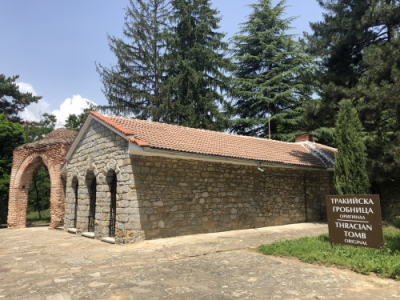
The Thracian Tomb of Kazanlak is a masterpiece of Thracian creative art.
The monument is a vaulted brickwork "beehive" (tholos) tomb, that used to be part of a large Thracian necropolis. It comprises a narrow corridor and a round burial chamber, both decorated with well-preserved murals representing a Thracian couple at a ritual funeral feast.
Community Perspective: Unfortunately we are not allowed to visit the interior of the original masterpiece and have to make do with a replica. Be aware that it’s very small (about 3x3m). There are more authentic tombs in the rural areas around Kazanlak (on the T List as Seuthopolis) which are worth visiting – an extension to include those would make this WHS stronger.
Tikal National Park
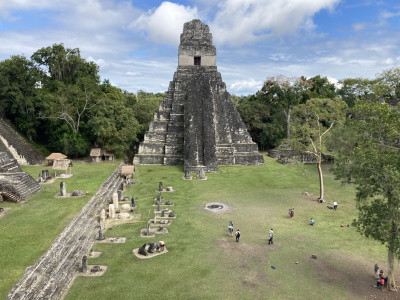
Tikal National Park comprises the remains of a major center of the Maya civilization, located within a forest that is rich in animal and plant diversity.
Tikal was one of the most important political, economic and military centres of the Ancient Maya, who reigned over large parts of the region during its heydays between 200 and 900. The site shows different stages of their evolution, resulting in monumental structures such as pyramids, temples, ball courts, stone stelae, water reservoirs and a network of causeways (sacbe). Animals include jaguar, puma, tapir, howler monkeys, anteaters, crocodiles, and more than 300 bird species.
Community Perspective: "You get it all at Tikal": the main ruins are spectacular and its rainforest environment is still intact. Allow at least 2 days. It is also directly accessible by public transport.
Urnes Stave Church
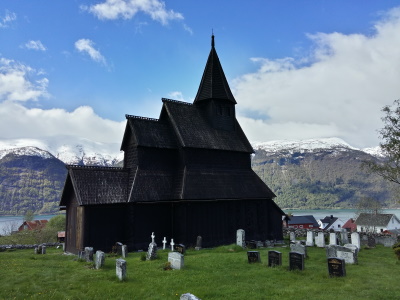
The Urnes Stave Church is an outstanding example of medieval Scandinavian wooden architecture.
From the original ca. 1,300 stave churches in Norway, only 28 remain and the Urnes church is one of the oldest of its kind. Romanesque stone architecture was emulated using Scandinavian construction techniques with wood. It further distinguishes itself by its decorative carvings. Those in the interior show the link between the pre-Christian Viking traditions and the transition to Christianity.
Community Perspective: a small but distinctly Norwegian church. Christer and Nan have described the long way of getting there on public transport. The church can be entered in summer when guides are present or by obtaining the key from the neighbour.
Versailles
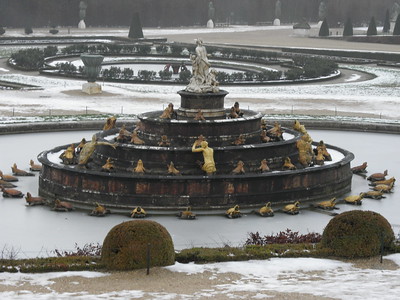
The Palace and Park of Versailles have had a large influence on the artistic form of other royal palaces and gardens in Europe.
Versailles is a symbol of the system of absolute monarchy and its court life of the Ancien Régime. From 1661 onward, King Louis XIV expanded into one of the largest palaces in the world and moved his court and government to Versailles. For more than a century it was further embellished by his successors and functioned as a crucible for French court life.
Community Perspective: The Hall of Mirrors and the Gardens are the most memorable parts of a visit. Els has provided tips on how to beat the crowds, Roel has added a ‘skip-the-line’-option and Daniel found an alternative access gate.
Vézelay
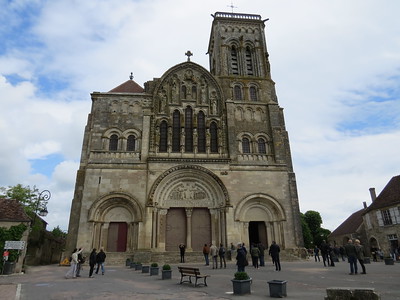
Vézelay, Church and Hill, is renowned for the church of St Mary Magdalene, which is an important place of pilgrimage and a masterpiece of Burgundian Romanesque art.
The church was an attraction for medieval pilgrims as it kept relics of Mary Magdalene. It also is strongly connected to the history of the Crusades. In 1840 Eugène Viollet-le-Duc restored the Romanesque church to its former glory after centuries of neglect had left it to ruins. The central nave with its carved portal is seen as one of the major monuments of Western Romanesque art.
Community Perspective: This hill with the church on top is a landmark visible from afar. The town is nothing special and a bit of a tourist trap. The former Abbey is its only highlight – reviewers have enjoyed its collection of wooden crosses and the last review (2022) reports that the building looks amazingly clean and new.
Vézère Valley
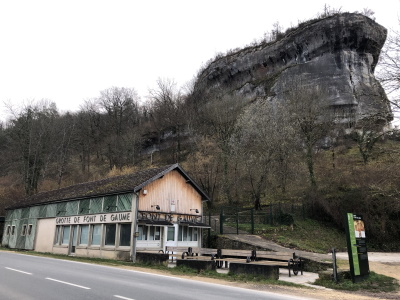
The Prehistoric Sites and Decorated Caves of the Vézère Valley comprise a complex of caves and other archaeological sites that bear witness to long-extinct civilizations.
The sites include the finding places of skeletons of early modern people such as the Cro-Magnon man and of their utensils. Most characteristic are the caves, such as those of Lascaux, which were painted during the Upper Paleolithic. They consist mostly of realistic images of hunting scenes of large animals, including aurochs.
Community Perspective: The 15 locations are notoriously hard to visit because of their access policies and/or popularity such that they require pre-booking. Read Els’s review for an overview of the peculiarities and then check the official websites for updates. The ones that are really worth planning ahead for (as you can see original paintings) are Rouffignac and Font de Gaume. Cap Blanc has good reliefs.
Virunga National Park
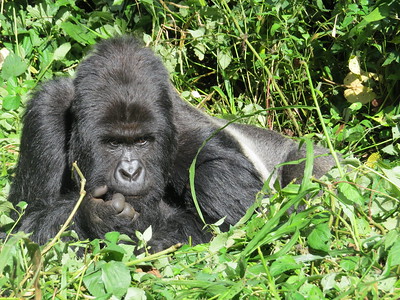
Virunga National Park covers a spectacular montane landscape with seven active volcanoes and a high diversity of plants and animals.
Nyiragongo and Nyamuragira are the most active African volcanoes with substantial associated lava plains and a lava lake. The park, which holds a wide range of habitats, is home to mammal species such as the hippopotamus, the mountain gorilla, the lowland gorilla, and the eastern chimpanzee. Virunga - then called Albert National Park - was established in 1925 as Africa's first national park, in order to protect the mountain gorillas.
Community Perspective: the park is well-geared to receive tourists when the DRC’s security situation allows it. Michael en Els both visited from the Rwanda border and met the habituated gorillas.